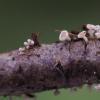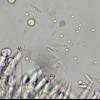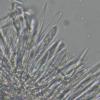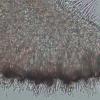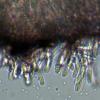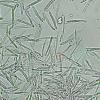
03-09-2025 21:59
Philippe PELLICIERLa Léchère, Col de la Madeleine, alt 1970m, au s

04-09-2025 20:11
Åge OterhalsSaccobolus on dear droppings. Can any of you confi

03-09-2025 12:44
Hi to somebody.I would like to know your opinion o

31-08-2025 19:41
Hi to someone.I need to download this issue of Sve

02-09-2025 11:34
Thomas Læssøehttps://svampe.databasen.org/observations/10527903

31-08-2025 17:32
 Michel Hairaud
Michel Hairaud
Bonjour, Pas d'identité trouvée pour cette réc

01-09-2025 08:42
François CorhayUn ami, conservateur d'une RN en Belgique, m'a adr

31-08-2025 14:34
Thomas FlammerI have found a Rutstroemia on abt. 2000 m on Alnus

29-08-2025 19:04
Thomas FlammerSpores 21.2 - 26.2 x 8.3 - 11.3 µm - Q: 2.20 - 2.
 Bonjour,
Bonjour, Je vous envoie ces images d'un échantillon de Lachnum, trouvé sur une brindille de Corylus, dans une forêt humide des Pyrenées catalanes.
Coupe 0,8-0,9 mm diamètre. Pied 0,5-0,6 mm d'haut.
Asques 34,8 – 40,8 x 5,1 – 5,5 µm.
Spores 7,7 – 10 x 1,5-2,7 µm.
Poils avec incrustations, légèrement élargis au sommet, 25,7-28,2 x 2,6-3,3 µm.
Paraphyses terminées en point, 53,7-53,9 x 3,7-3,9 µm.
Je pense en Lachnum crystallinum, mais je ne suis pas sûr du tout.
Merci d'avance pour votre aide,
Andrés

Hello Andres,
your Lachnum (s.str.) cannot be L. crystallinum (former Dasyscyphella crystallina) because of the hairs that are granulate to the top. Further, this species grows on Quercus only (?).
Which Lachnum you have found is difficult to say, because we for instance do not know if there are croziers at the base of the asci.
As I see, the paraphyses do not contain (many) vacuoles, and there are no crystals on the top of the hairs.
Best, Lothar


About the hairs, it's the length that I could measure, from the top of the hair to the most dense and colored part (I can't ruled out that they will continue in this part). I'm going to try to separate these hairs.
Andrés
